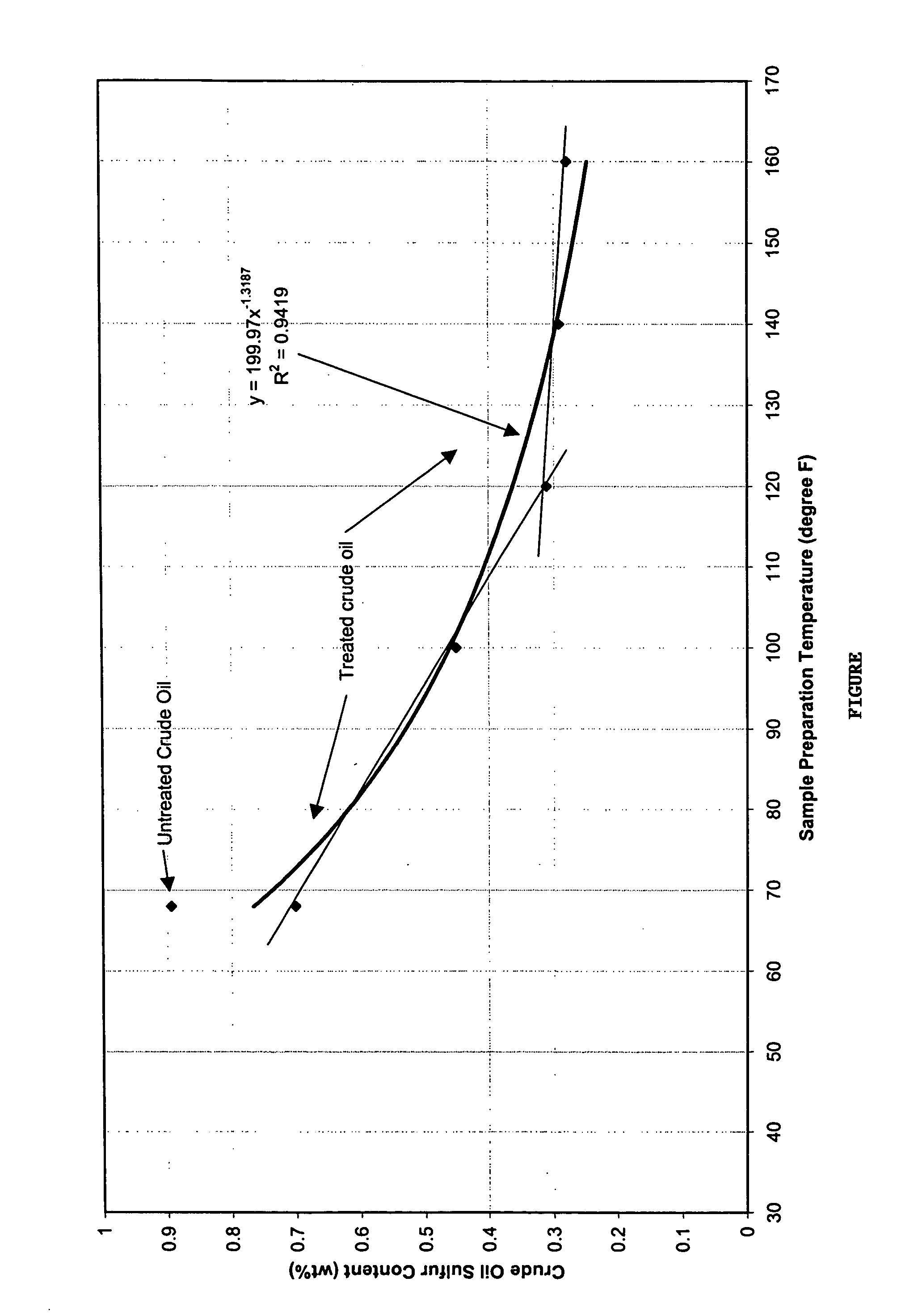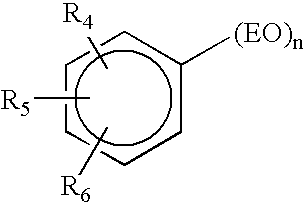Methods and compositions for removing sulfur from liquid hydrocarbons
- Summary
- Abstract
- Description
- Claims
- Application Information
AI Technical Summary
Benefits of technology
Problems solved by technology
Method used
Image
Examples
example 1
[0027] Three individual hydrocarbon liquids (Alaskan Crude Oil, Jet Fuel, and Raw Diesel Fuel) were tested using the most preferred composition of the invention, namely a water dispersion of initially solid ingredients made up of 40% by weight NP-100 (nonylphenol ethoxylate having about 100 ethoxylate moieties) 10% by weight cocodiamine, and 50% by weight sodium nitrite. In each case, the total sulfur content of the hydrocarbon was initially tested using ASTM method No. 04294. Next, 100 ml of the liquid hydrocarbon and 40 ml of liquid dispersion containing 12,500 ppm of the 3-component composition were mixed and heated to approximately 140° F. The heated mixture was then placed in a separatory funnel. The funnel was then shaken vigorously approximately 100 times, and the hydrocarbon and aqueous phases were then allowed to separate. The hydrocarbon fraction was then drawn off and again analyzed to determine the total sulfur content therein. The results of these tests are set forth in...
example 2
[0028] In another set of tests, Alaska Crude Oil was tested using the most preferred 3-component composition of the invention at various oil temperatures ranging from about 65-160° F. The oil had an initial total sulfur content of 9,000 ppm and was treated with approximately 9,000 ppm of the 3-component composition. In each test, the composition was added to the oil in a separatory funnel after heating thereof, followed by agitation as described in Example 1 and settling to allow the phases to separate. The hydrocarbon fraction was then drawn off and analyzed for total sulfur content.
[0029] The Figure graphically illustrates the effect of oil temperature on the degree of desulfurization. At lower temperatures there was significant desulfurization but as the temperature increased to 120° F., a dramatic improvement was observed. Temperatures above 120° F. gave little further improvement.
example 3
[0030] Two producing oil wells in North Dakota were treated using the most preferred composition of the invention. The composition was initially prepared as a mixture of particulate solids which were then formed into approximate ¼ inch pellets. The pellets were thereafter dispersed in water at room temperature at a level of 1 pound of solid composition per gallon of water.
[0031] The first well was a horizontally drilled well producing 335 barrels of oil and 264 barrels of water per day. The well had a vertical depth of 9,000 feet and a total drilled length of 17,000 feet. The oil produced by the well had a sulfur content of 0.54%.
[0032] A total of 51 quarts of the described dispersion was introduced at a constant rate into the annulus of the well over a period of 24 hours, with a side stream of well fluid being added atop the dispersion to ensure that the dispersion reached the well bottom. The next day the oil was again tested and it was found that it exhibited a total sulfur con...
PUM
| Property | Measurement | Unit |
|---|---|---|
| Percent by mass | aaaaa | aaaaa |
| Percent by mass | aaaaa | aaaaa |
| Percent by mass | aaaaa | aaaaa |
Abstract
Description
Claims
Application Information
 Login to View More
Login to View More - R&D
- Intellectual Property
- Life Sciences
- Materials
- Tech Scout
- Unparalleled Data Quality
- Higher Quality Content
- 60% Fewer Hallucinations
Browse by: Latest US Patents, China's latest patents, Technical Efficacy Thesaurus, Application Domain, Technology Topic, Popular Technical Reports.
© 2025 PatSnap. All rights reserved.Legal|Privacy policy|Modern Slavery Act Transparency Statement|Sitemap|About US| Contact US: help@patsnap.com


